I have now been using Windows Phone 7, Microsoft’s new mobile operating system, for exactly a week, having temporarily set aside my beloved Android-based Nexus S in the process. To really test a smartphone, and determine what the end user experience is like, I don’t like to play around with a phone for a few days, I like to switch and make the new phone my primary device. To that end, my current device is an HTC HD7, now running the most recent version of the Windows Phone software.
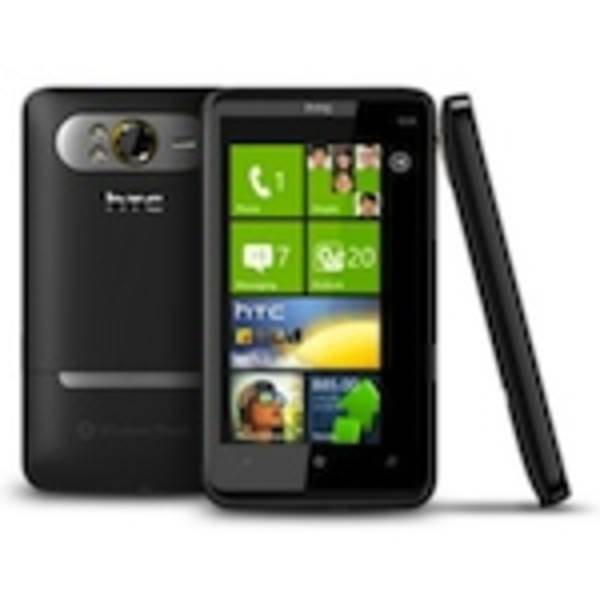
In the first week, I’ve discovered what it’s like to use a Windows Phone with a Mac, how to customize the device to my needs and how to enjoy (and curse at!) the Zune Marketplace. I’ve also installed an interesting smattering of useful apps and have pinned various items to my homescreen. But there’s one thing that Windows Phone can’t do well – it can’t deeply connect me to the Google experience. And this may be the one sticking point that sends me back to Android.
Yes, I’ve Been De-Googled
I suppose becoming unbound from the Google experience on a Windows Phone 7 device makes sense – after all, the two companies are major competitors. But for someone like myself, who is heavily invested in many Google products from Gmail to YouTube, it’s disconcerting. Using the Gmail and Google Reader Web applications on the Windows Phone 7 device is like traveling back in time to the early days of the mobile Web. The attractive, better-than-a-native-app Web applications Google built for smartphone users are not available to those on Windows Phone 7. That means, instead of getting something that looks like this, you get this.
Google Reader, similarly, is downright unusable in this ancient, dumbed-down format.
Of course, for many users – particularly those who turn to native applications for things like checking email and news, this is of no matter. For example, if you’re on the iPhone and use Apple’s mail client, you’ll love the Windows Phone mail app. In fact, it even offers something the iPhone lacks – the ability to select multiple messages and mark them as read, or unread, or flag or unflag them for follow-up. On the iPhone, you can launch into an “edit” mode for mass editing, but you can only move or delete the emails once there.
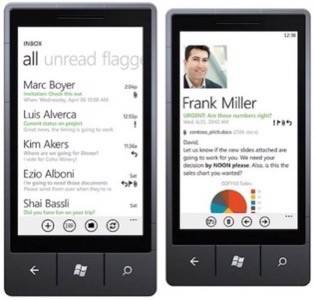
There are also fairly decent RSS reader applications to be found in the Windows Phone Marketplace which sync with Google Reader. I’m currently testing Wonder Reader, gReadie and GReader. (I have no definite preference yet). But the need to turn to native apps over Web applications, while certainly doable, speaks to a larger problem with Windows Phone, and one I’m unsure will ever be addressed: the Google factor. If Google continues to build highly functional Web apps for its various services, will I ever be able to use them on a Windows Phone? At what point will Google ever think beyond the confines of iPhone, Android and BlackBerry when building these improved smartphone Web experiences?
It’s not just Google Web applications, either, that have me concerned. Google is restricting Microsoft’s access with native apps, too, or so Microsoft claims. Microsoft recently added its name to the EU’s investigation into Google’s anti-competive behavior, citing how, for example, how Google won’t give Microsoft access to YouTube’s metadata. Says Microsoft:
Google has refused to allow Microsofts new Windows Phones to access this YouTube metadata in the same way that Android phones and iPhones do. As a result, Microsofts YouTube app on Windows Phones is basically just a browser displaying YouTubes mobile Web site, without the rich functionality offered on competing phones. Microsoft is ready to release a high quality YouTube app for Windows Phone. We just need permission to access YouTube in the way that other phones already do, permission Google has refused to provide.
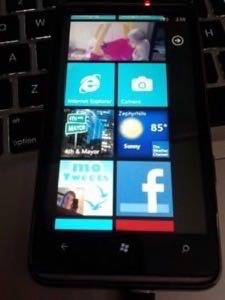
Leaving aside the irony of Microsoft filing an antitrust claim against Google (oh, how times have changed!), all I know is that for an end user, this stinks. The YouTube app on Windows Phone is not great. What’s even worse is that there’s no way at present to upload videos from the phone and post them on YouTube! Can you imagine? In this day and age? Considering the excessive amount of “momarazzi” videos I take of my child, this is downright unacceptable from an end user perspective.
But Let’s Move On…Interface and Apps
Outside of the Google issues, there’s a lot to like about the phone. The tiled homescreen design is innovative and useful. The major “hubs” (think messages, phone calls, photos, friends, games, etc.) keep you connected to what’s going on with tiles that update, indicating things like your new email count, or the new photos of your friends from social networking sites like Facebook. You can even pin individual friends to your homescreen for quick access to contact information and recent status updates.
You can also pin your favorite apps to your homescreen, too. And some developers have begun to take advantage of this “Live Tile” functionality to deliver new content to their apps homescreen tile. This makes the tiles function more like the widgets on Android, in delivering live, informational updates. Unfortunately, there aren’t a lot of apps out there at present that do this, or that do it well.

So far, I’ve been fairly happy with the moTweets Twitter application and The Weather Channel’s app, but others I’ve tried so far have been inconsistent at best. For example, after installing the recommended Twitter app Beezz specifically for the purpose of using its Live Tile, the app kept throwing errors every time I tried to switch on the Live Tile functionality. This continued for days. What’s more surprising is to find similar issues from developers I thought I could trust – like Weatherbug, whose Live Tile simply stopped functioning.
I’ve also been disappointed in Flickr Manager (paid version), a Pixelpipe-like app which now displays a bunch of error codes after uploads complete. This occurs despite the photos having been successfully transferred to the online photo-sharing service. And I only installed Flickr Manager because Flickr’s own application was painfully slow. Initially, I liked the Flickr’s app interface – it loads your camera roll in what appears to be a Web application, allowing you to tap an item to upload it or double-tap for a quick upload. But working your way through a long set of photos is painful – as the upload begins, the user interface becomes unresponsive.
Windows Phone 7 Connector for Mac Surprisingly Good
On the desktop side of things, I have to admit, I didn’t expect much from the Windows Phone Connector for Mac, the software that allows Mac users to sync the phone with the music, videos, photos and podcasts from iTunes and iPhoto. But not only has it worked well for me, it has done so nearly flawlessly. (Well, except once: when I first attempted to install the “NoDo” update, it didn’t take and I had to start over).
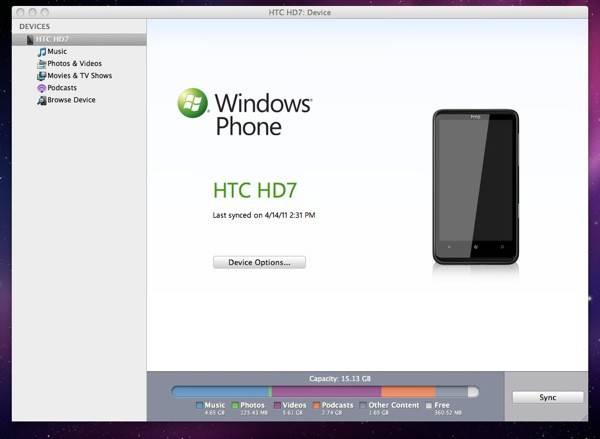
For Mac users accustomed to the iTunes universe, the Connector makes it less troubling to switch from an iPhone to Windows Phone. You can sync all your (unprotected) content over to the new device, while continuing to use iTunes to manage podcast subscriptions and iPhoto to manage photos. But by not being a PC user, you miss out on the Zune software’s access to movies and TV shows, not to mention the Wi-Fi sync feature provided to PC users only.
I feel Microsoft should take a page from Apple’s book and instead of (or in addition to) offering a Connector tool for Mac users, it should offer a feature-complete Mac version of the Zune software. A little parity here would be nice.
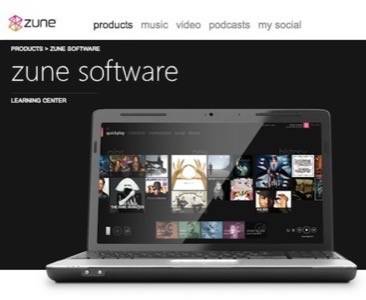
For me personally, the lack of TV shows and movies was a not a major issue, because I can use Netflix instead. Yes, there’s an app for that! (Sorry, Android.)
For music, Zune Pass, Microsoft’s music subscription service, lets me stream music from the Web to my phone. This is similar to how competitive services like MOG, Rdio and Spotify work. However, where these services offer rich native mobile applications, all I seem to be able to do with Zune is play and pause songs, or move backwards and forwards through albums. I suppose if I had access to the Zune desktop software, I could build playlists, but I can’t seem to do that from the phone itself. (If this is user error, please let me know).
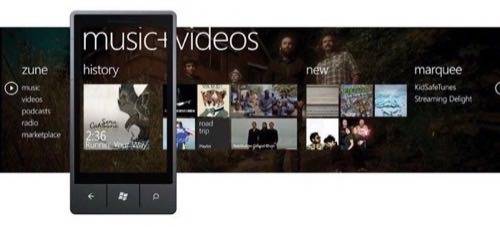
This shouldn’t be a make or break issue for potential Mac customers, though, because there are alternative subscription-based apps, including Bitbop and Rdio, for example, and Spotify is on its way.
Mango Update Will Solve Many Issues
It should be noted that this progress report on my transition to Windows Phone comes on the heels of this week’s news about the forthcoming “Mango” update for the mobile operating system, which is due out this fall. For end users, this is going to be the big one.
Mango will bring multi-tasking, the ability for apps to run in the background (even streaming music apps), a new version of IE9, and much-needed improvements to Marketplace search. Until the most recent update, Marketplace search was awful – music and apps were all returned in a jumbled pile of search results. The first update to the phone, which I installed this week, has corrected that problem, along with others (including the delivery of copy-and-paste, which is working fine by the way). And Mango promises even more improvements like this.
The forthcoming update will also allow developers to more deeply integrate their apps with the phone, providing access to the phone’s contacts and calendar, plus hardware features like the camera and accelerometer. And it will allow for more functional Live Tiles, so developers can offer multiple tiles, double-sided tiles, tiles that change color and more. You can see a great example of this with the Qantas application here.
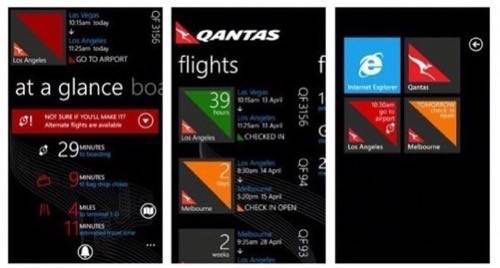
I expect we’ll see far more interesting and useful applications come out after Mango’s release. In the meantime, it feels like Windows Phone lacks those “killer,” cutting edge applications, like the app that analyzes the calorie count in your food from a photo of it, or the app that translates text it sees in the camera’s viewfinder. It also lacks the early adopter’s favorite new toys, like Instagram and Beluga, Yobongo and GroupMe. It even lacks what feel like staples to me on Android: Google Places, Latitude, Skype, Angry Birds and Pixelpipe. (Skype and Angry Birds are coming, though). That’s not to say the platform won’t have killer apps of its own one day – ones that do interesting things with the Live Tiles, for example. But is it there yet? No.
The Testing Continues…
Despite the negatives I’ve brought up in this article, the overall experience is not bad. What I’ve neglected to mention is the elegant, attractive Metro UI (the user interface), which may be my favorite smartphone design yet. I love having Netflix again, which I missed on Android. And the Live Tiles of select contacts pinned to my homescreen offer me a unique way of staying in touch with my closest friends and family members.
More importantly, I think there’s a simplicity that comes with using this device – that’s not a slight, it’s a compliment. Ease-of-use is not an attribute I’d offer to Microsoft software typically, but Windows Phone is something different. I can easily recommend it as “mom’s first smartphone.” Maybe it’s the big, square buttons, or maybe it’s the software’s still-limited functionality that make the phone seem so simple to use. But after having gone from iPhone to Android, I can say there was a definite learning curve in switching to Android devices, especially in learning the menuing systems, when and where to press to launch the alt menus and how to tweak and edit the various customizations. Comparatively, Windows Phone has been like using a child’s toy.
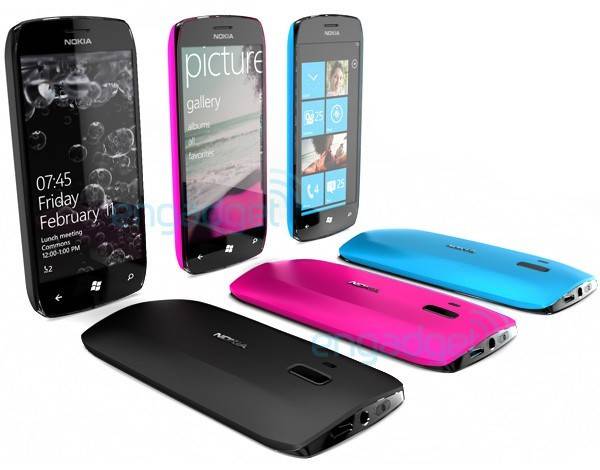
But is it a toy I could recommend to early adopters today? Not yet. For anyone moving from Android or iPhone especially, the lack of multi-tasking will be a step backwards. However, after Mango is released, and when you can get this OS running on Nokia’s outstanding hardware (coming by Q1 2012 at the latest), that recommendation may change.
In the meantime, I’ll continue using this device, and will check in again when I have some new information to share about my experience.
Image credits: Qantas – iStartedSomething; Nokia phones – Engadget




















